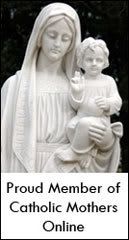Now why have I brought up memories of the Boston Tea Party? Well, despite the well founded fears of possible tax hikes looming in our immediate future that is not the reason - though the American public would do well to remember the main underlying reasons for their rebellion that led to the founding of this great country my real reason is a selfish one. I was simply looking for a showcase for the following article that I wrote when I was "auditioning" for a blog position. (Which sadly - I did not get.) It seemed a shame that it along with the second article that I wrote, were simply lying around in my hard drive gathering dust so - here it is:
But when did tea become so popular, bagged or otherwise? China, whose national drink is that of the green tea blends, is where the earliest actual records of tea drinking are found and it is from this part of the world that this ancient art and drink originated. But who popularized it on the Continent? Contrary to most people's belief tea drinking did not start in England, but rather Portugal. With many of its citizens living in the East as traders and missionaries, tea found its way back to the homeland. It's high cost kept it an exotic drink reserved for the aristocrats and this was still its state when the British King Charles II found himself needing a very rich wife in order to clear the debts he had inherited with his crown in 1660. After much negotiating Charles II wed the Portuguese Princess Catherine of Barganza. Her extensive dowry required several ships to transport it and included in it was a single trunk of loose tea, most likely a blend of black leaves. Still it was not until many years later when Princess Catherine had established herself as a trend setter that tea became popularized as a favorite drink among the upper classes. Again, the high cost, which was maintained by heavy taxation, kept this drink from the working classes.
Gradually this extravagant and fragrant tea traversed through the classes of England and began to make a name for itself in the middle classes. But as the result of heavy taxation the price remained dear, bringing this drink to the attention of smugglers. With this came a whole new set of headaches for both the government and the population of England. While the smuggled purchases allowed tea to become affordable to the general public, the lack of quality inspection at customs led to unscrupulous actions. So as to stretch their profits, sellers began to add leaves from other plants. However, the sometimes resulting color was not dark enough to be believable so items, such as sheep's dung, were added to make it look darker and thus more like a good blend of black tea.
Ultimately, realizing that the actual costs of trying to circumvent the actions of the highly organized network of tea smugglers, the British government decided that heavy taxation of tea was not worth it and in 1784 the tax was slashed from 119 % to 12.5 %. By 1851 the annual British consumption of tea was just less than two pounds a person but by 1901 it had reached the level of consumption of an even 6 pounds a person. Today the popularity of tea, whether drunk bagged or as a loose tea blend, is growing by leaps and bounds here in the States.
Sources used:
http://www.tea.co.uk/ (UK tea council)
http://www.teainfusers.info/history/index.htm
http://ezinearticles.com/?Premium-Tea-Blends---History-And-Production&id=799887
http://www.teausa.com/general/002ga.cfm
http://www.kevinard.com/infusers.htm
IGNORE



No comments:
Post a Comment